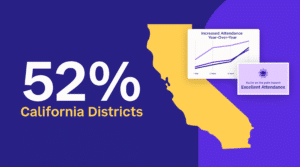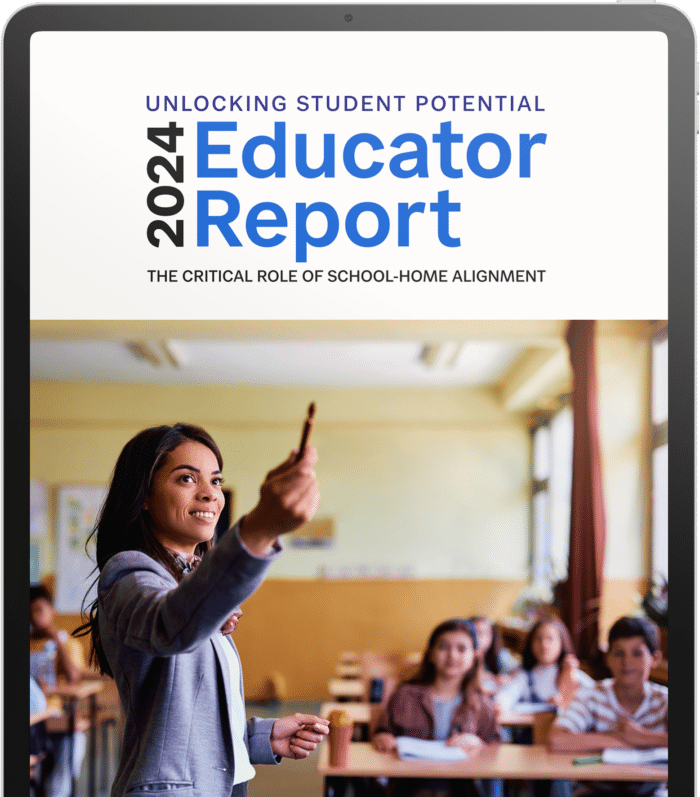
Featured Resource
Why Over Half of California School Districts Trust SchoolStatus
Read More >Join Mission: Attendance to reduce chronic absenteeism in 2025-26! >> Learn How <<





There’s no such thing as student success in isolation.
School communities thrive when educators, families, and administrators work in alignment. Yet, according to SchoolStatus’ 2024 Educator Report, that alignment is missing in key areas, and it’s costing students time, engagement, and outcomes.
In surveying over 1,000 educators and administrators nationwide, the report exposes a troubling disconnect between what schools intend to communicate and what families actually receive. For district and school leaders, it serves as a wake-up call and a roadmap.
Download the full 2024 Educator Report
In an era of record-high chronic absenteeism and growing concern over student well-being, strong school-home alignment is an essential condition for student success.
Here’s what the data reveals:
These misalignments have ripple effects:
The result? Students who could be supported earlier fall through the cracks.
It’s not for lack of effort. Educators want to connect. Families want to engage. But the methods, systems, and assumptions often don’t line up:
If a district only activates school-home communication during crises or compliance deadlines, it becomes reactive and transactional in nature. To build proper alignment, communication must be proactive, personalized, and ongoing.

The 2024 Educator Report doesn’t just diagnose the problem. It offers data-backed recommendations to address it. Here’s how school and district leaders can take meaningful action:
Modern tools like SchoolStatus Connect enable districts to centralize messaging, auto-translate into over 130 languages, and send texts, calls, and emails from a single solution. These features ensure messages are received, understood, and acted on, especially by historically underserved families.
Communication isn’t separate from data—it is data. When educators can see messages logged alongside attendance, academic progress, and interventions, they have a complete picture of each student’s support ecosystem. That’s what makes solutions like SchoolStatus different: they move schools “from data to action.”
Educators are under pressure. The right tools reduce friction. The right training makes usage consistent and strategic. When teachers can easily see which families they haven’t reached and get suggested follow-ups, family engagement becomes part of the daily rhythm, not a separate task.
“It’s no longer about remembering to check in — the system prompts it. With simple, clear insights, teachers can act quickly without second-guessing. That kind of support turns good intentions into daily habits,” points out Founder of Edumentors, Tornike Asatiani.
Districts using integrated family engagement tools to track delivery, open, and response rates gain powerful insights to refine outreach strategies and boost student attendance. Use this data to refine your strategy, personalize outreach, and identify families who require additional touchpoints.
From attendance campaigns to back-to-school nights, make the message clear: use effective communication to build a culture of partnership that supports students emotionally, academically, and socially.
Download the full 2024 Educator Report
In California, where SchoolStatus partners with over 50% of school districts, chronic absenteeism has dropped 21% in three years. And in Texas, districts using SchoolStatus saw double-digit gains in attendance and engagement rates from 2023 to 2025.
The difference? Not just tools, but a shift in mindset: from communication as a requirement to communication as a lever for change.
Families aren’t just recipients of information. They are critical partners in student success. When educators and caregivers work from the same playbook, everyone wins:
The future of education will take more than smarter systems. By rebuilding relationships with the people who know students best, school and district leaders will pave the way to success.
Let’s start by aligning the messages we send with the outcomes we want to achieve.
Access the full 2024 Educator Report to discover the communication gaps holding students back—and how your district can lead the change.
The 2024 Educator Report is an annual survey conducted by SchoolStatus to capture insights from over 1,000 educators and administrators across the United States. It reveals current trends, challenges, and opportunities in K-12 education, especially in the areas of family engagement and communication.
When families don’t receive timely, clear, or accessible updates, they can feel disconnected from their child’s academic journey. These gaps contribute to missed interventions, lower attendance, and reduced trust between schools and caregivers.
Effective strategies include:
Districts using SchoolStatus solutions have reported double-digit improvements in engagement and attendance. In some cases, chronic absenteeism dropped by over 20% when communication became more frequent, personalized, and aligned with student needs.
 Rob Humenik
Rob HumenikSenior Content Marketing Manager
Rob Humenik is a seasoned content marketing professional with over a decade of experience in educational technology. He is passionate about leveraging technology to improve student outcomes and simplify the lives of teachers and administrators. As Senior Content Marketing Manager at SchoolStatus, Rob showcases how the company’s solutions help school districts boost attendance, increase engagement, and drive meaningful improvements in student success. When he’s not crafting content, Rob enjoys kayaking, fishing, and cooking for friends and family.
News, articles, and tips for meeting your district’s goals—delivered to your inbox.



Ready to learn more about our suite of solutions?
